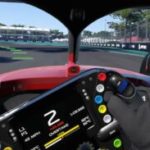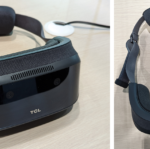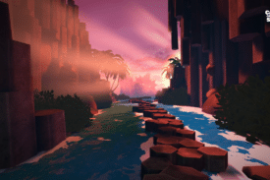At Display Week 2022 Meta revealed the detailed specs of Quest 2’s LCD panel.
In a talk titled ‘High-PPI Fast-Switch Display Development for Oculus Quest 2 VR Headsets’, Meta display engineer Cheon Hong Kim detailed the headset’s display architecture and discussed the design challenges of using LCD for VR.
Fast Switch LCD
It’s essential that displays used in VR headsets only illuminate the pixels for a small fraction of each frame – a technique called Low Persistence. That’s because each frame represents an exact moment in time, whereas in real life as you rotate or move your head the light arriving to your eyes will continuously change. If the pixels were constantly illuminated, your eyes would be receiving light for the original position even as your head turned, and your brain perceives this as motion blur. The original Oculus Rift Development Kit shipped in 2013 had this problem, and it was solved in Development Kit 2 in 2014.
At high enough refresh rates – for most people above roughly 70 Hz – you don’t even notice that the display is completely black the majority of the time. The first wave of modern consumer VR – Oculus Rift, HTC Vive, and PlayStation VR – exclusively used OLED displays because OLED pixels are self-illuminating and have an extremely fast response time, so could be easily switched off for the majority of the frame.
LCD displays were originally thought unsuitable for VR, given the much longer response time. But since the release of the Windows MR headsets in 2017, a new type of LCD panels called ‘fast switch’ have become available. These panels illuminate the backlight for a fraction of the frame, after waiting for the liquid crystal to “settle down”. Quest 2, like Oculus Go and Rift S before it, use such a panel.
Detailed Specs & Architecture
The 1920×3664 resolution and 120 Hz max refresh rate were already publicly known, but the talk revealed the panel’s exact 5.46 inch size and density: 773 pixels per inch.
It’s also noteworthy that Meta revealed the panel’s brightness – 100 nits. Keep in mind that figure is when using low persistence, so it would likely be much brighter if used outside a headset.
Meta also revealed some interesting physical properties of the display. Since Quest 2 has three IPD settings and two lenses but only one panel, only a subsection of the panel is used at once. And because the lenses are closer to circular than square, the very corner of the display is never needed – so it was simply cut out to save space.
This approach of using a single panel with an active area subsection means each eye actually gets fewer than the 1920×1832 pixels listed in the Quest 2 specifications on the Meta Store.
Screen Door Effect
Cheon Hong Kim also went into detail about some of the specific causes of SDE – screen door effect – in VR headsets:
These factors are important considerations when specifying and sourcing panels for VR headsets, but Cheon acknowledged Quest 2 has some of the issues outlined here. Meta still hasn’t released a headset fully free from the screen door effect.
R&D Priorities
In the conclusions slide, the key display resolution spec of Quest 2 was revealed, the angular resolution measured in pixels per degree. Meta says Quest 2 has 21 pixels per degree. The generally accepted figure for “retinal” human eye resolution is 60 pixels per degree. While VR headsets have been making solid advancements – the Oculus Rift had roughly 14 pixels per degree – there’s still clearly a long way to go.
Finally, Cheon alluded to Meta’s future research and development priorities – to reach the human perceptual limit of 60 pixels per degree using “high PPI micro displays” and “various foveation technologies”.
At Display Week, eMagin presented a 4K OLED microdisplay and Meta won a patent for a dynamic foveation technique a few years ago.









